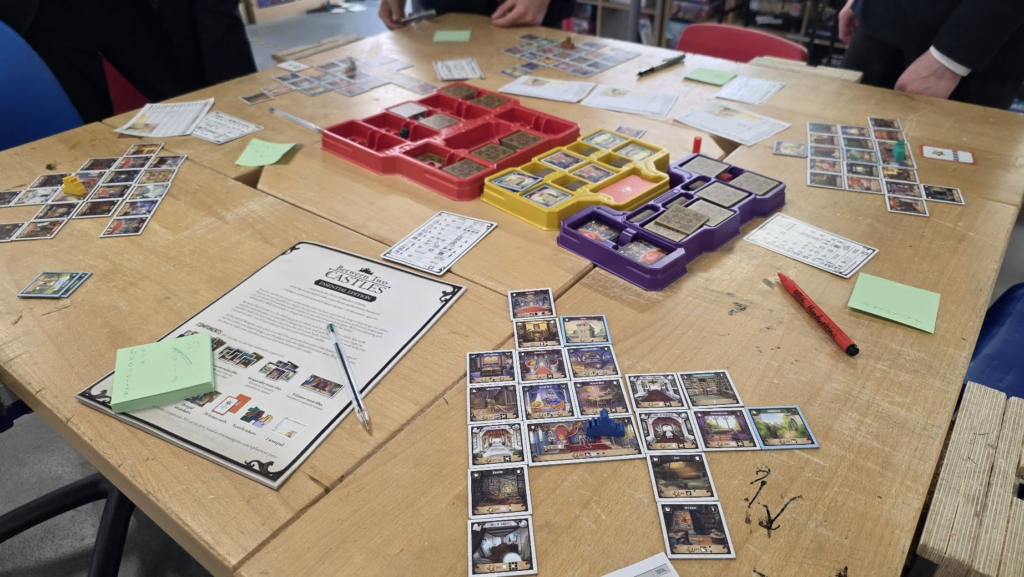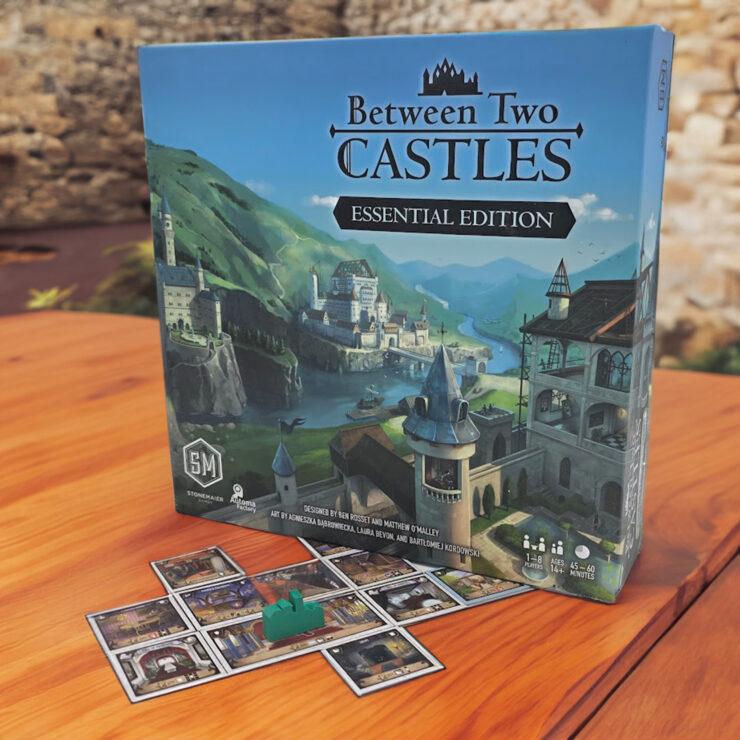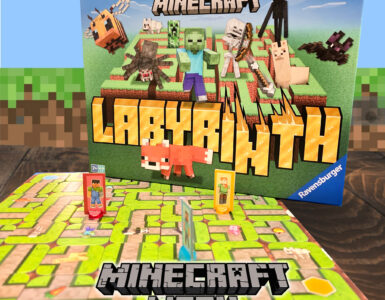It’s been a little while since we’ve looked at any games aimed at older kids, but today I really want to talk to you about Between Two Castles. Now, the version we’re looking at here is actually Between Two Castles: Essential Edition, which includes the original game (which was once called Between Two Castles of Mad King Ludwig) plus the expansion. That might sound a little confusing, but this is generally the version that’s available now — and if you’re buying it in a shop, this is almost certainly the one you’ll pick up.
Again, there’s a really interesting concept at play here. Essentially, you’re building a castle with the players seated to your left and right. The way the castles score is your fairly standard tile-laying fare — e.g., you want certain rooms next to other specific types, some rooms have to be placed above others, and some give you bonus points depending on how many of a particular type you collect. But the tile-laying aspect isn’t really where this game shines. What makes it special is the way you have to work with other players.
You start with a hand of tiles, and on your turn, you choose two: one to place in the castle to your left, and one for the castle to your right. Once you’ve picked your tiles, you then have to turn to your partners and decide together how to place them meaning you don’t get your own castle. Instead, your castles are co-built with your neighbours.

It’s a really clever concept because it means you have to work together, but not necessarily toward the exact same goals. You’re trying to make the best possible castles, but you’ve got to cooperate to get there.
The most interesting aspect, though, is the scoring. Your individual final score is the lower of your two castle scores. So, you can’t just focus on one and neglect the other you’ve got to balance both equally well, or risk dragging yourself down. This creates a great dynamic and adds a light social deduction element as you chat and strategise with both neighbours.
One of the really nice things about this semi-cooperative, semi-competitive setup is that, although the game is rated 14+, you can absolutely play it with younger children. As long as they’re sitting next to an adult, it’s easy for them to get a bit of help and still enjoy the game. Sit the table adult–child–adult–child, and you’re good to go.
Component-wise, the game is strong. It comes with some really nice trays that make setup easy. Oddly, the trays don’t quite match the illustrations in the rulebook, so you might need to figure a few things out on your own. There are also pre-made starting hands you can use, which is great, but there’s also a general pile of tiles you draw from during the game and it’s not immediately obvious which tile is which when you’re first starting out. That can cause some confusion, but overall the trays are a big positive — I’d much rather have them than not.
The tiles are high quality, the little meeples are nice, and all in all, it’s a really well-presented package.
Overall, I really like Between Two Castles. It’s a solid and engaging tile-laying game in its own right, but what really makes it stand out is the semi-cooperative way you build the castles. One thing I will say is that it definitely plays better at higher player counts — I’ve played it with three and with six, and it really shines with more players. There is a solo and two-player variant in the box. I’ve tried the two-player version, and while it works, it’s not nearly as enjoyable as the full multiplayer experience.
If you’re looking for a step up to a slightly more complex tile-laying game, this is a great choice. I’d definitely recommend it for teenagers and for families with keen older kids — especially if your games night includes a bigger group.
Disclaimer: Between Two Castles Essential Edition was provided for the purpose of review by Stonemaire Games. All thoughts and opinions are our own.














